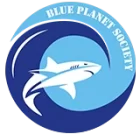
In 2017, the EU Council of Ministers agreed on a three month fishing closure for eels but excluded glass eels (juveniles < 12 cm). If the European Commission would extend its’ proposal to all life stages including glass eels (The French National Fisheries Committee CMPMEM has discussed this before), this could facilitate stricter control of glass eel fisheries and therefore support a reduction in illegal exports to Asia. In recent years, trafficking of glass eels from Europe to Asia has been identified as a serious threat, and by the number of individuals and the value of the product, it might be one of the world’s greatest wildlife crimes.
Biology and stock decline
The European eel is considered to be a keystone species, maintaining a balanced aquatic ecology, both as a predator and prey species, in addition to being an important nutrient flow to and from the sea. As a catadromous species, eels spend most of their lifetime in freshwater and/or coastal waters but reproduce in saltwater, in the Sargasso Sea north of the Caribbean. Due to its’ complex life cycle the species does not fit easily into marine management concepts like Maximum Sustainable Yield (MSY). Very significant mortalities appear during the freshwater phase when eels migrate downstream and are chopped by turbine blades or when upstream migration is blocked or reduced by one of the million plus men-made obstacles.

Worldwide, researchers have investigated the potential causes for the massive decline in European eel populations and so far, no one can identify a single determining factor. The stock decline is probably caused by combination of several factors including, habitat loss, turbine induced mortality, changing oceanic conditions, pollution, disease and parasites, and overexploitation.
Use for human consumption
Eels are the most widespread single fish in Europe and the Mediterranean and are the basis for many local, diverse traditions across its distribution area from North Africa to the Barents Sea. On a global scale, European eel aquaculture today plays a minor role producing about 2% of the global eel aquaculture production whilst China accounts for about 85%.
Trade ban and scale of trafficking
The high demand of glass eels for Chinese eel aquaculture runs parallel to the alarming stock decline and has forced the European Commission to ban the trade of European eels across the outer borders of the EU from 2010. The scale of the illegal trade to Asia has recently been quantified being much bigger than the legal, declared European catches. Europol estimates that about 100 tons of glass eels, equivalent to about 300 Million eels, are annually trafficked to Asia while the total declared European catch accounts for only 60 tons. The legitimate annual demand for European eel aquaculture is about 15-20 tons – less than a fifth of the amount trafficked.
Two different methods are used to illegally fly live glass eels from Europe to Asia. For the first method, eels are put in saltwater and packed into oxygen-inflated plastic bags within conventional suitcase and are flown out as passenger luggage.

For the second method, eels are transported in air freight containers hidden under other seafood goods or mislabeled as a different but legal species. Considering the vast quantities that are annually trafficked to Asia, we have to assume that the second method accounts for the majority of the shipments due to the limiting capacities of suitcases. Nevertheless, during 2018 the Spanish SEPRONA raided a warehouse and found 364 suitcases prepared to move about 5 tons of eels.

The proposed three month closure of the glass eel fisheries during the natural recruitment period might have several effects on glass eel trafficking. During the closure period, all glass eel fisheries and most of the trade (except the eels caught before the closure period) will be illegal. This will ease control and enforcement. Furthermore, the legal fishing period will be shortened by three months. This will likely increase the fishing pressure during this narrowed period but also temporarily condense the fishing activity which will again enable more efficient control and enforcement.
A three month closed season from all fishing may result in some increase in protection for the endangered eel if it was accompanied by effective enforcement. Nevertheless, SEG believes that recovery remains unlikely until the non-fishery mortalities are rigorously addressed and trafficking has been eliminated.
Florian Stein is Director of Scientific Operations, Sustainable Eel Group (SEG), a Europe-wide conservation, science and industry led organisation, working with partner bodies to accelerate the eel’s recovery. Twitter @eelgroup @steinbutt Facebook @sustainableeelgroup Web www.SustainableEelGroup.org





